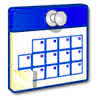Topics
IDS 252: 3D Computer Animation



- Introduction to Maya
- Overview of Animation Process
- Visual Story Telling and the Principles of Traditional Animation
- Graphics Fundamentals:
- 2D vs 3D graphics
- coordinate systems
- projections
- transformation and viewing
- components of a graphics system
- Modeling Basics:
- polygons
- NURBS
- subdivision surfaces
- Revolving, Extruding, Lofting, etc
- Overview of Color:
- additive vs subtractive
- color models
- color in Maya
- Design and composition
- Animation Basics:
- keyframing
- examples: bouncing ball, simple walk cycle
- 12 Principles of Animation
- The Mechanics of Animation in Maya:
- timing and setting keyframes
- working with the graph editor
- Maya:
- path animation
- deformers and constraints
- animating rigged models
- Acting, conveying emotion through movement
- Cinematography and Camera techniques.
- color, contrast
- depth of field: deep focus, shallow, rack
- lenses: normal, telephoto, zoom, wide angle, fisheye, vertigo effect
- shot types:, establishing shot, wide, long, medium, close-up, crane, pan, tracking
- camera angles: point of view, low, high, dutch/tilt
- speed, blur
- framing and composition – mood, tone, atmosphere, balance, symmetry.
- Lighting:
- types of lights
- three-point lighting: key, fill, back
- shadows and shadow maps
- Materials:
- shading models
- textures
- projections and mapping
- bump mapping
- Rendering Methods:
- scanline
- ray tracing
- radiosity
- Rendering Issues
- Anti-aliasing
- Using the Renderfarm
- Story Development
- conflict and tension
- genre
- visual elements
- audience
- look and feel
- Animation and Music Collaboration
- Animation Production Process (also See Lab 8 for details)
- Story Development
- Story Boards
- Story Reels
- Concept and Reference – Establishing Place and Style
- Character Modeling, Movement, and Expression
- Scene and Prop Modeling
- Animatics
- Animation
- Editing and Post-production
- Organization and Gantt charts



